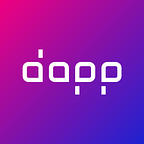2 Innovative New DeFi to Expand Your Cryptocurrency Investment Ideas
This week, we will introduce you to 2 new DeFi protocols with innovative crypto investment strategies. No matter you are chasing high interest with high risk or you prefer sound investment, you can find some fresh ideas here.
Belt Finance
Belt Finance can be a conveyor belt of optimized yield to your assets. It’s an AMM protocol that incorporates multi-strategy yield optimizing on Binance Smart Chain (BSC) with low fees/slippage that also provides aggregation through vault compounding, lending and yield generation for maximum returns.
In Belt Finance, all tokens or LP tokens can be pooled. The best pools will generate more yield and return more incentive to Belt pool liquidity providers. Some of these pools may consist of a variety of:
- Instant-swap protocol (like PancakeSwap) LP pools
- Vault with lending protocols (like venus) token pools
- Staking assets & assets (like ETH-BETH) pools
- Tokens + pool tokens (like VAI — venus pool ) pools
- Non-yield non-impermanent loss stable vault pools with AMM profits
You can now access the USDT-USDC-BUSD-DAI pool, while the VAI-VENUS BLP and ETH-BETH pools are on the way. Belt Finance maximizes yield returns on your asset position by strategically utilizing a variety of vaults and compounding these an optimal number of times per day.
If you have read our article about Liquity Protocol yesterday, you will know that you do not need to bear the staked tokens’ price fluctuation to enjoy profits by doing stablecoin staking. Belt Finance stablecoin pool USDT-USDC-BUSD-DAI is one of the stablecoin staking options you can choose.
If you deposit DAI in Belt Depositor you will receive bDAI in return. bTokens can be regarded as your deposit receipt. They represent liquidity provided in a Belt depositor contract. If the depositor contract you are providing liquidity to generates profit, your bTokens will increase in value, since they represent a share of that pool. This is why you may observe an increase in price. When you withdraw liquidity from the pool, your bToken will be burned. bTokens are BEP-20 meaning they can be transferred and traded like any other BSC token.
By providing liquidity to the stablecoin pool, you are actually doing stablecoin mining which you do not need to bear the price fluctuation of the token you bought.
BELT tokens are used for Belt Finance governance, for example, to decide Block emission rate (inflation), mining rate, BELT pool distribution, fees or burn rates.
You can earn BELT rewards by staking WBNB-BELT LP.
To stake, first, you’ll provide liquidity to the WBNB-BELT pool on PancakeSwap, then get the LP token, and come back to Belt Finance to stake your LP token. So you need to buy in $BELT to bear its price fluctuation.
Belt Finance data dashboards demonstrate that the BELT token price has a high correlation with its users, volume, transactions and dex trading volume.
Antimatter
Antimatter is an on-chain DeFi derivative protocol. Each perpetual option Antimatter product has one underlying asset (ETH, wBTC.) and two parameters: option price floor and option price ceiling.
Let’s take ETH as an example: We can create an option with parameters of 1000 USD as floor price and 2000 USD ceiling price. So this product is now called ETH(1000–2000).
- The CALL token for this option always gives the right to purchase ETH at 1000 USD.
- The PUT token for this option always gives the right to sell ETH at 2000 USD.
If ETH is trading at $1500 then the CALL token holder can use this CALL token to purchase ETH at $1000 making a $500 profit. Conversely, the PUT token holders can use the PUT token right to sell ETH at 2000 and purchase back ETH at 1500, making 500 USD profit.
As from the example above, leverage is dynamic and will depend on the price of the product and the price of the option token.
- Leverage of CALL = Price of underlying asset / Price of CALL
- Leverage of PUT = Price of underlying asset / Price of PUT
To execute a call/put strategy it’s normally sufficient to buy the corresponding token from the open market. There is however also the possibility to generate and redeem option pairs.
- To generate a set of option tokens (CALL & PUT) you deposit 1000 USD worth of collateral.
- To redeem a CALL token for ETH you deposit 1000 USD worth of collateral and the CALL token. CALL token gets burned and you receive 1 ETH from the underlying asset pool.
- To redeem a PUT token for USD you can deposit 1 ETH and the PUT token. PUT token gets burned and you receive 2000 USD from the underlying asset pool.
Arbitrage opportunities will make sure the creation and redemption balance equation always holds. If the aggregate price of call and put tokens exceed the redemption payout, then market makers will create more option tokens to supply the market.
$MATTER token is the utility token of the ecosystem. You can earn it by staking, innovative LP farming mechanism, governance staking/voting rewards, option creation, redemption and LP provision.
There are 4 pools to stake at present. And the highest APY is 601% of the -ETH($3000)/USDT LP pool.
$MATTER can be used to pay the protocol fee with a discount. Protocol fees are used to buy back tokens, including option generation and redemption fees and protocol transaction fees.
How is its performance since launched? Users and transaction amounts surged to ATH on 27th Feb, but dropped to around 80 users and 150 transactions per day after that, not much surprise. While its volume reaches daily ATH at $394,972 on 8th April. Whales coming in?
